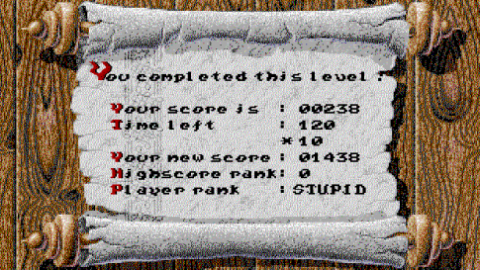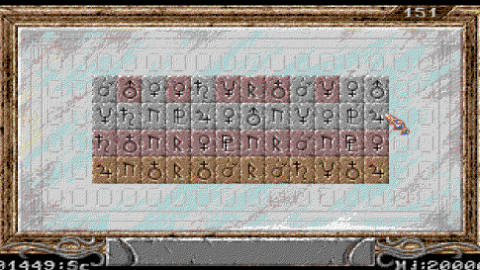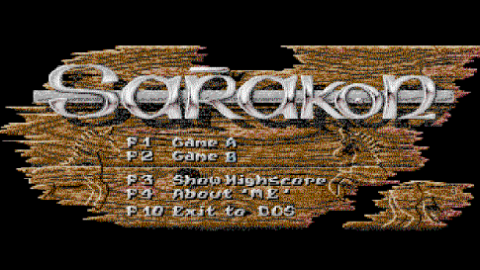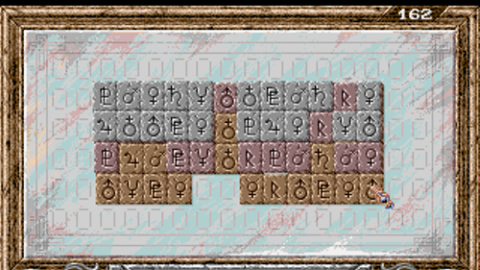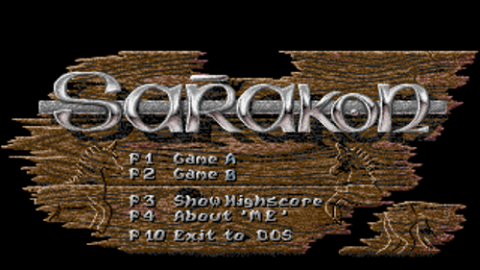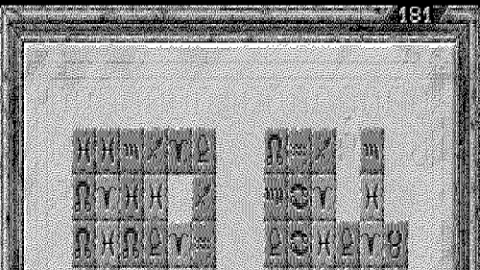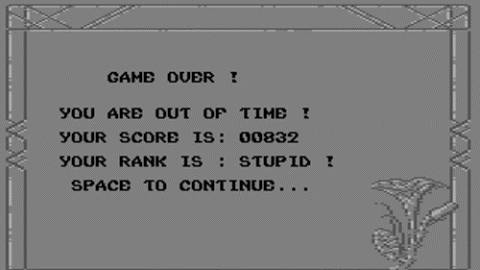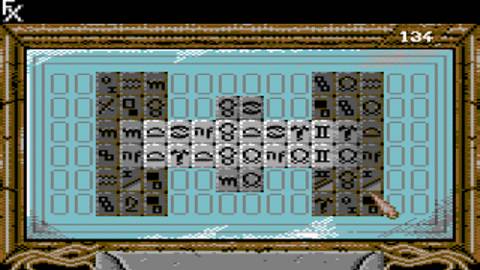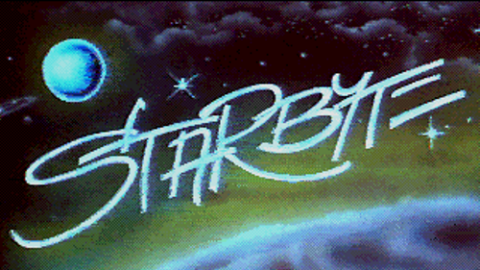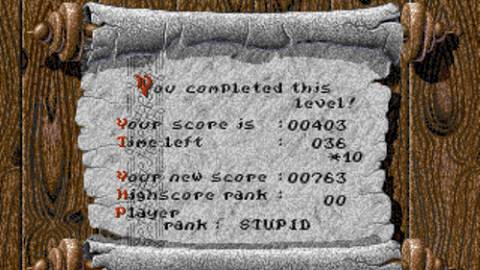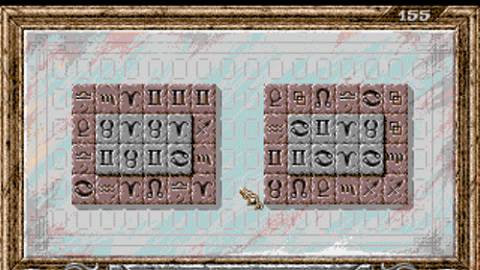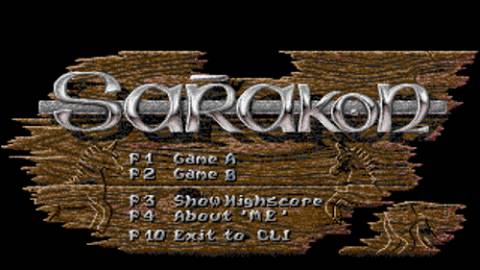Overview
Sarakon is a mahjong solitaire game developed and published by Starbyte for MS-DOS, Amiga, and Atari ST computers in Germany in 1990, with a release in other parts of Europe by Virgin Mastertronic in 1991. It was also ported to the Commodore 64 by Digital Excess in 1990.
One of the earliest games based on the "nikakudori" variant of mahjong solitaire (where all tiles are "open", but can only be matched if a path of 1-3 orthogonal line segments can be imagined between them that touches no other tile), Sarakon includes a simple tileset (resembling runes carved on stone tablets) and some unique gameplay differences:
- Rather than a simple unstacked rectangle, the game has formations with up to three layers of tiles (tan at the bottom, then reddish-brown, then grey). Upper tiles can obscure lower tiles (requiring them to be cleared first). Depending on the difficulty level, tiles can either match only on the same layer (Game A) or can match onto lower layers (Game B).
- The game uses 16×6 grid, and the nikakudori path cannot exceed outside the edges of the grid (making it difficult with tiles along the edges).
- The game includes two unique tiles: Special Stones (which stops the timer for 10 seconds) and Joker (which allow players to clear all copies of a particular tile). Players are given a limited amount of free Joker clears from the start on each stage.
The game includes 40 stages in total, with every third level being one of two types of bonus stages: one where players start with two pairs of tiles and must score as much as they can (as matching pairs cause two additional pairs to enter the board at random locations), and one based on concentration (where all tiles start face-down and can only be flipped over two-at-a-time, with matching tiles clearing them). Players are timed on each stage, and the game ends when the timer reaches zero on a normal stage. Although there are no continues from where they left off, passwords are given for each 10 stages.
A Game Boy version was in development in 1992, but was cancelled. A prototype version was later discovered.

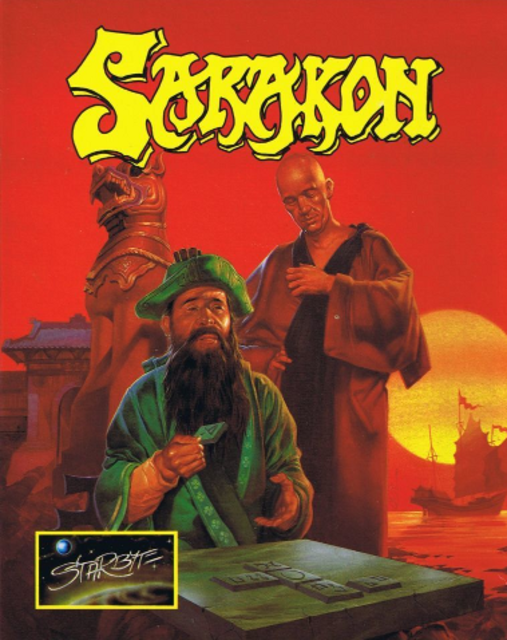
 Amiga
Amiga PC
PC
